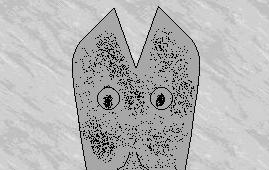Heroes. We all have them. We’d all like to think of ourselves as one. (Oh, come on – you don’t think Charlie Manson is the hero of his own life?) These days, our heroes tend not to come from real life, but from fiction: Superman, say, or Lieutenant Columbo, whose dogged questioning of suspects was guaranteed to reveal the true identity of the killer before the fade out to the closing credits.
Maybe it’s no surprise that our heroes are fictional: in the real world, even these upstanding characters would be compromised. Superman would be forever tainted by his involvement in the Iran/contras scandal (hey – the American way ain’t what it used to be). And, Columbo, he would have been forced to retire when it was revealed that he looked the other way while fellow officers bullied and beat innocent citizens because of their colour.
In the real world, heroism is complicated.
You may think, for instance, that being a hero means doing good deeds. Don’t beat yourself up over it – this is a common misconception. In fact, villains and heroes often do exactly the same things. How can we tell the good guys from the bad guys, now that men’s hats are no longer in fashion? By their motives.
Take the examples of a Palestinian suicide bomber and Eric Rudolph. Both blow up innocent people, so both should be considered villains. Right? Wrong! In the American heartland, Palestinian bombers – bad; Eric Rudolph – good. To understand the differences, refer to Chart 1.
Chart 1: Domestic versus International Terror
| weapon of choice | bomb | bomb |
| target | civilians | civilians |
| specific target | Jews living in Israel | abortion doctors, gays, foreigners |
| justification | the Koran | the Bible |
| result to bomber | death | movie of the week |
| view from North Carolina | “Bastards’re getting’ in the way of the End Times | “He’s just doin’ god’s work.” |
| North Carolinian actions | lobby government for absolute support for the state of Israel | years of help evading authorities |
| view from Palestine | “This is self-defence against brutal Zionist oppression!” | “Eric who?” |
| Palestinian actions | years of help evading authorities | watching more CNN – those Americans are nuts! |
Looking more closely at Chart 1, we see that defining a hero is really a matter of deciding whose motivations you most sympathize with. Thus, to many Arabs living in Palestine, the suicide bomber is a hero, while Eric Rudolph barely registers. (Relativism! Oh, no! Lock up your daughters! Nobody is safe!)
In comic books, the line between hero and villain is fluid. For instance, Magneto, the villain in the X-Men movies, at one point in the comic book series takes over Xavier’s school for gifted children. This fluidity can be found in the real world, as well, as Chart 2, which compares Saddam Hussein’s status in 1983 and 2003, attests.
Chart 2: Saddam Hussein versus Saddam Hussein
| crimes | oppressing Iraqis, looting treasury | oppressing Iraqis, looting treasury, disobeying Americans |
| financial situation | American military aid | American-led economic embargo |
| justification | support for his war against Islamic theocracy Iran | his support for terrorism, weapons of mass destruction |
| overlooked | gassing of the Kurds | nobody can find his weapons of mass destruction |
| American reputation | heroic ally | the new Hitler |
| Arab reputation | traitor | the new Saladdin |
In comic books, this transformation occurs because the character declares he has changed his motivation, and his behaviour changes accordingly. In real life, behaviour doesn’t have to change for a person’s heroic status to change; the perception of his motivations does. In the case of Saddam Hussein, he was always an evil bastard, but his evil bastardness was overlooked by Americans in 1983 because he was useful to their foreign policy; by 2003, when he was no longer useful, his heroic image was likewise DOA.
How are people’s perceptions of heroes and villains formed? Like all of their perceptions: through the media. An excellent example of this is a comparison between President Bill Clinton and President George W. Bush (which can be found in Chart 3; President John F. Kennedy is included as a control).
Chart 3: John F. Kennedy versus Bill Clinton versus George W. Bush
| personal scandal | sexual | financial, sexual | alcoholism, poor grades, failed businesses, etc., etc. |
| war experience | WW II | ducked Vietnam duty | disappeared from home guard duties during Vietnam |
| wars | Cold War | Kosovo | Afghanistan, Iraq (and counting) |
| international relations | United Nations | United Nations | “coalition of the willing” |
| economy | inherited strong post-war economy | balanced budget despite inheriting deficit from previous administration | ballooned deficit despite inheriting balanced budget from previous administration |
| domestic policy | maintain social programmes | cut back on social programmes while claiming to maintain them | gut social programmes |
| policy stance | hands-on | policy wonk | policy lite |
| press relationship | worshipful | poisonous | worshipful |
| hero to | most Americans | other policy wonks | the far right and Fox News watchers |
In many ways, George W. is a less successful president (and, quite possibly, human being) than Bill C, yet the former is a hero while the latter is constantly vilified. The most significant variable in this case is their relationship with the press, which couldn’t be more different.
This suggests that the whole idea of heroism is a malleable construct, arbitrarily applied to suit current political ends. Hmm…let’s see Superman work his way out of that trap!


